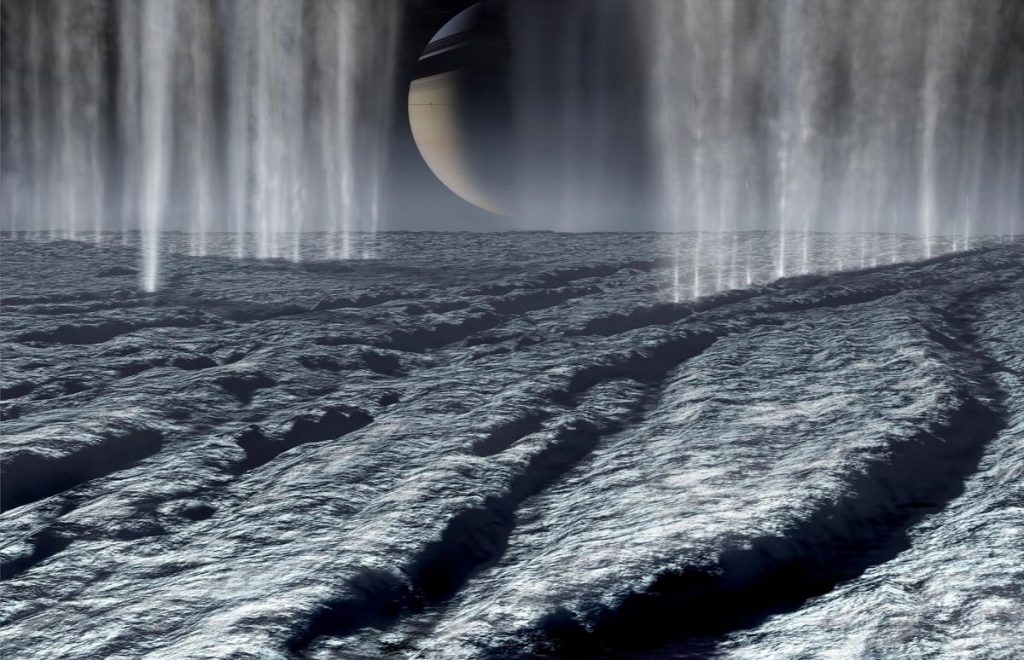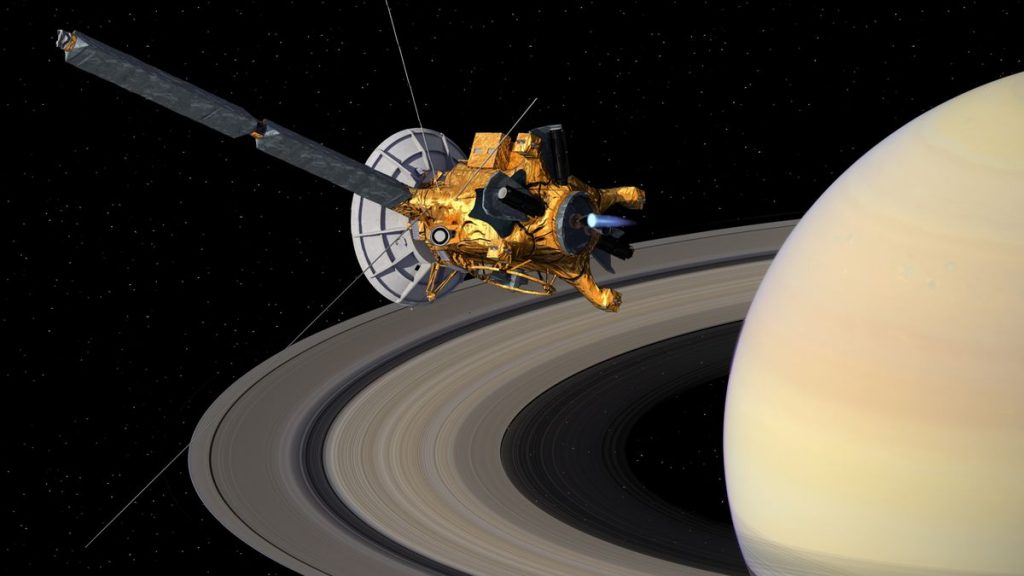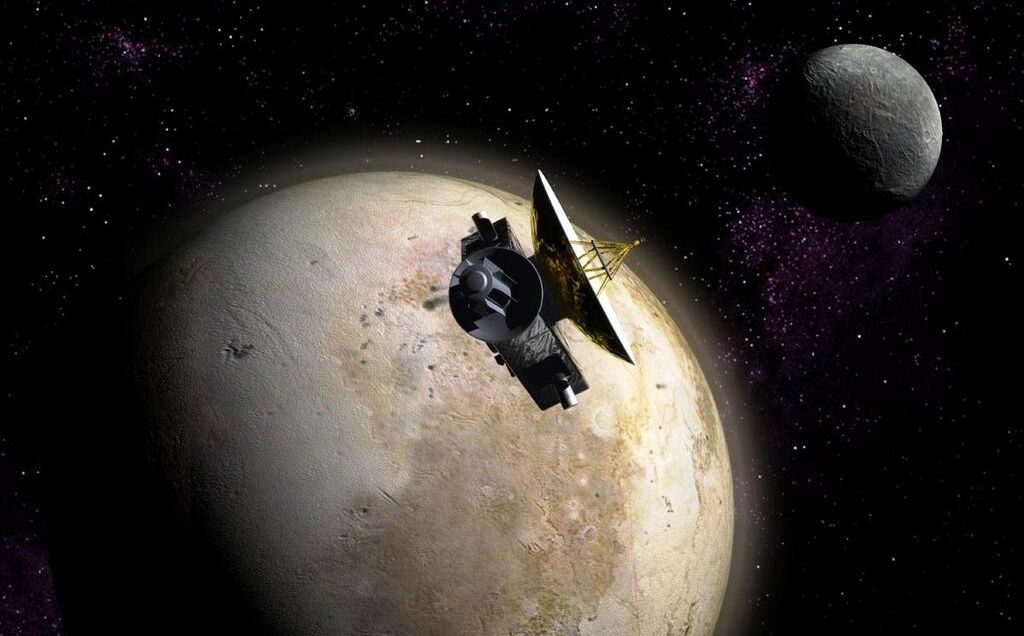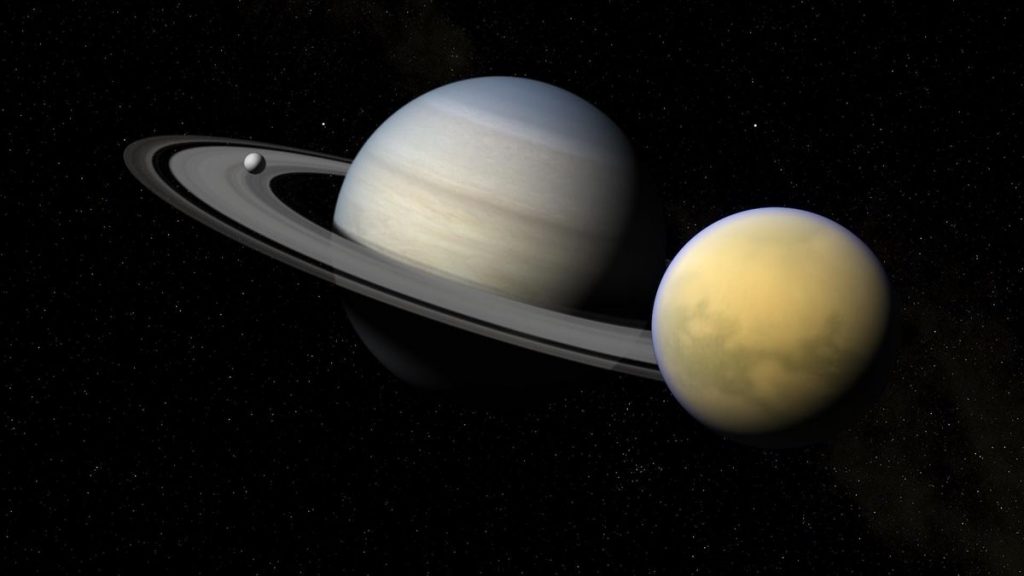Enceladus. This name was given to one of the satellites of Saturn by John Herschel, the son of the famous English astronomer William Herschel, who discovered this satellite in 1789. By the way, Saturn has 62 natural satellites in total. Enceladus is one of the largest – it is the sixth in size.
It owes its name to a character from ancient Greek mythology – the giant Enceladus, struck by the goddess Athena on the island of Sicily after the famous battle between the Olympian gods and related giants. Now this mythological character attracts the attention of tourists who get acquainted with the characters of the ancient Greek epic in the gardens of Versailles, observing the so-called fountain of giants. But Enceladus is of much more serious interest to scientists. For almost two centuries, this mysterious satellite remained little studied.
But in the twentieth century, the era of space exploration began. And so in the early 1980s, the turn came to Enceladus. The Voyager interplanetary probe brought the first information about this satellite to Earth. Its diameter (about 500 km) and the relief of the surface were determined. In some places Enceladus turned out to be fairly riddled with craters, and in some places the surface turned out to be quite smooth.
But the real sensation was waiting for Earthlings later, after sending the Cassini interplanetary probe into Saturn’s orbit.
This device transmitted information about the presence of a water plume on Enceladus. The presence of water gave rise to the search for possible life on the distant moon of Saturn. But if there is life somewhere on Enceladus, it’s not on its surface. Because the average temperature there is about minus 200 degrees Celsius. And this practically excludes any form of life known to science.

But there is still hope – to penetrate into the bowels of the satellite. Considerable cracks have been found on its surface, “looking” into which scientists have established that there is an ocean under the Enceladus ice crust. And the temperature in the cracks is much higher than on the surface of this cosmic body – about 85 ° C below zero.
 Moreover, the data of the Cassini probe and scientific calculations suggest that at the south pole of Enceladus at a depth of 15 to 20 kilometers, the water of the local ocean has a liquid form. Moreover, the water temperature gradually rises: from -45 ° C in the upper layers to 0 °C and even +1 ° C in depths, which is comparable to terrestrial temperature parameters. Researchers are also given additional excitement by the fact that the composition of ocean water on Enceladus is quite close to the composition of oceanic and marine waters on Earth. Thus, a number of the above-mentioned parameters in the characteristics of the mysterious satellite of Saturn inspires earthlings with optimism to find life in the Solar System at least at the level of microbes.
Moreover, the data of the Cassini probe and scientific calculations suggest that at the south pole of Enceladus at a depth of 15 to 20 kilometers, the water of the local ocean has a liquid form. Moreover, the water temperature gradually rises: from -45 ° C in the upper layers to 0 °C and even +1 ° C in depths, which is comparable to terrestrial temperature parameters. Researchers are also given additional excitement by the fact that the composition of ocean water on Enceladus is quite close to the composition of oceanic and marine waters on Earth. Thus, a number of the above-mentioned parameters in the characteristics of the mysterious satellite of Saturn inspires earthlings with optimism to find life in the Solar System at least at the level of microbes.




































